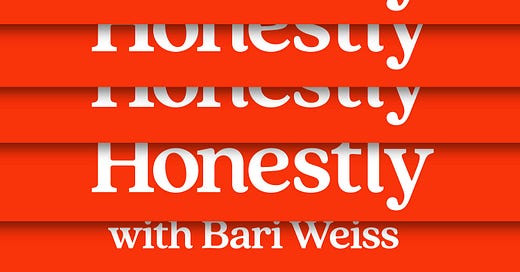In the 1972 presidential election, Democratic candidate George McGovern was soundly defeated by Richard Nixon. It was a bloodbath. He lost 49 states, a result widely attributed to his positions being “too liberal” for the American mainstream.
Four decades later, in a more liberal America, McGovern released a book called What It Means to Be a Democrat, outlining core values that define the Democratic Party. Because, he argued, in his day, during the “1968 Democratic National Convention in Chicago. . . it was obvious that a spirit of wide embrace was missing both inside and outside the convention hall.” The party had “splintered” into warring factions. This, McGovern argued, could never be allowed to happen again.
Here we are again, 50-plus years later, back in Chicago, back at the Democratic National Convention. There’s the version that’s inside. And there’s the one that’s outside, with left-wing demonstrators in the streets demanding the party forcefully oppose Israel’s war in Gaza, beseeching Democrats to somehow precipitate an end to capitalism and support various other identity-related progressive causes.
They marched and shouted, faces swaddled in N95 masks or tightly wrapped with keffiyehs, beneath a sea of Palestinian flags, punctuated by the occasional hammer and sickle. There was only one American flag to be found—a prop to be doused in lighter fluid and set alight.
Inside the convention hall, we passed countless people in red, white, and blue dresses and jackets and hats, while volunteers handed out signs that simply read “USA.” And while all those stuffed into Chicago’s United Center seemed energized by the Kamala coronation, we found divergent views on what it means to be a Democrat.
At the Republican National Convention in Milwaukee last month, there were no divergent views. No Never-Trumpers. No holdout Nikki Haley supporters. No contingent of free-traders, tax-cutters, or libertarians. The MAGA faction had fully purged the dissenters.
A recent CBS News/YouGov poll found that while 86 percent of registered voters said they knew what Donald Trump stood for, that number fell to 64 percent when the same question was asked about Kamala Harris. Some of this can be attributed to her many policy flip-flops, some to her decision to avoid almost all interaction with media. . . and some to the Democrats’ emphasis on vibes over policy.
So we came to Chicago to ask the question: What does it mean, in 2024, to be a Democrat?
If you liked what you heard from Honestly, the best way to support us is to go to thefp.com and become a Free Press subscriber today.
Header 6: The Free Press earns a commission from all qualifying purchases made through book links in this article, including as an Amazon Associate.
Learn more about your ad choices. Visit megaphone.fm/adchoices




JD Vance has not said legal migration should be reduced. That is a lie.
I started listening on my drive to work and will finish on my drive home, but I was struck at how the democrats he was interviewing sounded so racist and classist even though they probably wouldn’t have thought of themselves that way. They want the low skilled people to do the low skill work because…they can’t better themselves so they need to do low pay work? Also, the people sounded like well off people, kids going to Ivy League schools etc. The one lady bringing up Vance’s yard is weedy…too many weeds…then goes on to say how it’s democrats that care about others…really? Sounding like a HOA Karen and wants to be the one concerned about others lol. Well, my yard is weedy too bc I don’t use chemicals bc I have dogs and I like chemical free water going into our storm water drains. Plus weeds help feed the local bee population. I care too, but apparently about different things.